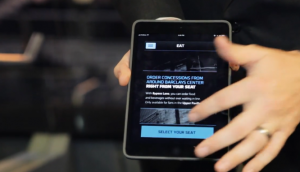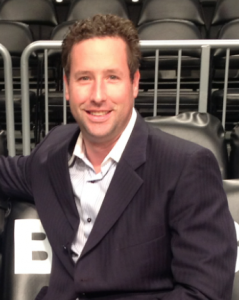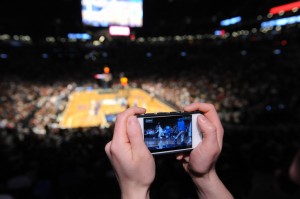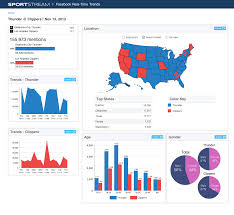According to Chip Foley, vice president of building technology for Forest City Ratner Companies (the developer of Barclays Center), perhaps the only mild surprise so far at the just-over-a-year-old Barclays is that the biggest Wi-Fi usage came not during a sporting event, but instead at the MTV Video Music Awards ceremony this past August.
“We had 7,000 people using the Wi-Fi network at the VMAs, and I was a little surprised at that,” said Foley. At Brooklyn Nets games, Foley said, the average Wi-Fi load in the 17,500-seat arena is somewhere between 4,000 and 5,000 users per game. In a recent phone interview, Foley recapped the performance of the stadium’s cutting-edge technology, which also includes one of the first deployments of Cisco’s StadiumVision Mobile, which brings live video feeds to fans using the stadium app. There’s also Cisco-powered digital displays throughout the arena, and a robust DAS deployment to make sure regular cellular connections don’t fail.
HD Wi-Fi attracts 20 percent of attendees
Barclays Center, which opened in September of 2012, had the benefit that few NBA stadiums have in that it was built from the ground up with networking as a key component. If Foley has any regrets about the Cisco Connected Stadium Wi-Fi deployment, it’s that it hasn’t really been fully tested yet. Even during the VMAs, Foley said he was using the in-building Wi-Fi to watch 10 different streaming video views on his laptop, from the red carpet cameras to the behind-the-scenes views of stars getting their awards.
“Our goal was to build as robust a network as possible, so that we can handle big needs of one-off events [like the VMAs] as well as the 41+ Nets games every season,” Foley said. With two 1-gigabit backbone lines providing Internet access, Foley said the Barclays network is meeting its goal of being “as fast as your fiber connection at home.”The only drawback so far seems to be getting more fans to try out the network connection when they are at the games or events. According to Foley, despite advertising and promotions, Nets crowds almost always hit a figure of between 20 percent and 25 percent of them being online, a “Groundhog Day” situation that has Foley wondering whether it’s a natural limit.
“That may just be the number of fans who want to use it [the network]” at a game, Foley said.
The Barclays Center DAS, deployed by ExteNet Systems using gear in part from TE Connectivity, is another non-surprise center for Foley.
“The DAS is great, we never get complaints [about cellular connectivity],” Foley said. “You dread hearing that people can’t send texts. That just hasn’t happened.”
Digital displays, both mobile and fixed
One of the more compelling features of the Barclays tech experience is the implementation of Cisco’s StadiumVision Mobile technology, which brings several live “channels” of video to any fan using the Wi-Fi connection and the stadium app, which was built by WillowTree. With views from the benches, behind the basket and quick replays, Barclays can bring an up-close and personal view to even those far away from the court.
“StadiumVision Mobile is great for the upper pavilion seats, you can now get a view from a different perspective, and get replays,” Foley said. According to Foley, Cisco engineers tested the technology’s performance to ensure that it worked at every seat in the house.Fixed digital displays are also a key technology at Barclays, starting with the unique Oculus display built into the striking exterior of the building, and continuing to the hundreds of digital displays inside. Using the Cisco Stadium Vision digital display technology, Barclays Center is able to change and update information on single screens or on all screens on the fly, allowing for greater flexibility in terms of messaging and information like concession-stand prices. Barclays also uses its displays to show train schedules, giving fans better information to plan their departures from events.
“The Stadium Vision displays have been nothing but great for us — we sold a lot of advertising on them even before launch,” Foley said. “It’s fun for our content group to build out content for the L-boards [displays where an L-shaped advertisement brackets other information on the screen], and keep it changing. Restaurant operators can use an iPad to change prices [on their screens] right before an event. They don’t have to talk to us. Overall, it’s a lot less maintenance than I expected or anticipated.”
If Foley had one chance to do anything over again with displays, it would be to add more of them to the original mix. His lesson to future stadium display builders is: If you’re in doubt, put up more.
“We must have had 30-plus meetings regarding [internal] TV locations, with 3D modeling and fly-throughs,” Foley said. “For the most part, I’m happy. But if I could, I would have more clusters [of screens]. Wherever there is one screen now, I wish I had three. People always look at a cluster.”
Adding new screens after the fact, Foley said, isn’t as simple as going to Best Buy to pick up a discount TV.
“You might be able to buy a TV for a couple hundred bucks on Black Friday, but no one tells you that to put that in a venue, once you get past union costs, connectivity and everything else, it’s about $5,000,” Foley said. “It’s way more money to add them now.”
What’s next: iBeacon, Google Glass and more analytics
What’s in the future for Barclays technology? For starters, Foley will oversee deployment of Wi-Fi services for the outside spaces surrounding the arena.
“It’d be nice to have Wi-Fi for ticket scanning outside the venue,” said Foley. “That’s one of those things that you don’t understand the need for it until you open the stadium and see what happens.”
Barclays is also looking into testing the Apple iBeacon technology, which can send text messages to devices in very close proximity. Technologies like iBeacon and even digital signage must also cross internal administrative hurdles, such as simply training sales forces and alerting advertisers to the opportunities.
“For some of the streams, there’s the question of ‘how do we sell this’ — the team has never done this and sponsors may not be aware,” Foley said. “You also have to figure out things like how many notifications and emails should we send out. You don’t want to send out too many, because that turns people off.”
Foley said the Barclays social media team is also at the start of a process of mining statistics from places like Twitter, Facebook and other social media streams, to get a better handle on what fans are using the technology for and how the experience might be improved. One possible way is through a Google Glass application, something Foley agreed might not be for everyone.
“I’m fascinated by the possibility of something like an XML stats feed [in Google Glass] where you’d still be able to watch the game,” Foley said. “We’re getting closer! It’s not for everybody, but some portion of the population is probably thinking that way.”












